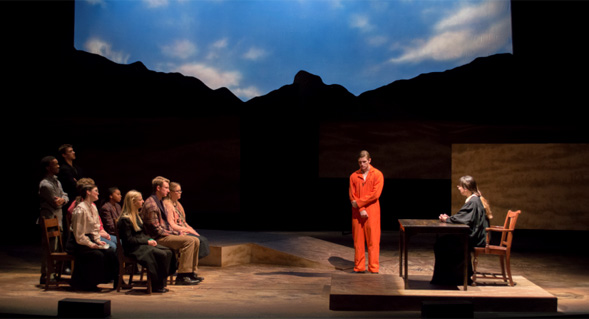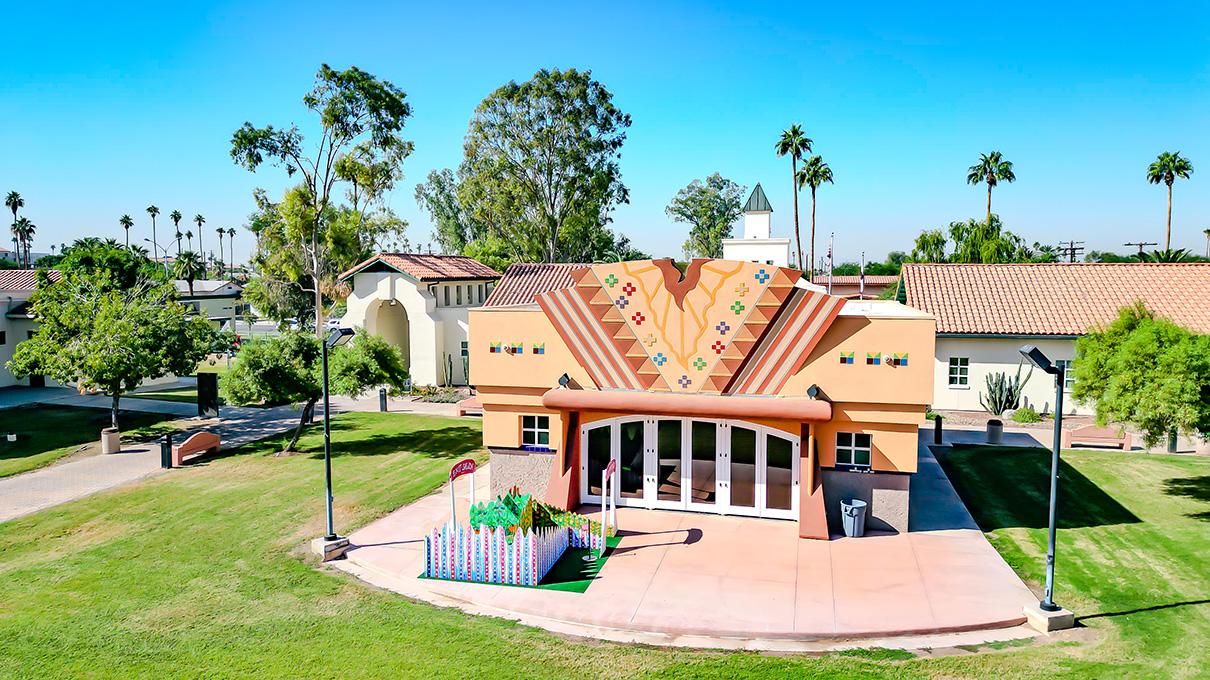Aztecs take on The Laramie Project
SDSU students contributed their artistic design skills to last months production of The Laramie Project.

The challenge for every production of a well-known play is maintaining a balance between keeping true to the original and applying the right amount of artistic liberty.
Conor Mulligan and Kathie Taylor, both graduate students in the San Diego State University Master of Fine Arts Program in Design and Technical Production, were given the opportunity to let their artistic abilities shine while paying homage to previous versions of The Laramie Project in the Theatre Department’s production of the play last month.
Lighting
Mulligan, the lighting designer for The Laramie Project, wanted to be involved because of his previous experience as an actor in another production of the play.
“I wanted to approach it from the point of view of a designer, kind of an outside look, because I was so much closer to it when I was acting in it,” Mulligan said.
Stage lighting can significantly influence the mood of a scene. Mulligan decided to give the audience the opportunity to develop opinions of the characters free of any subtle guidance. He brought his unique take to this tried-and-true production by utilizing no-color lighting.
“I really felt strongly because color has such an emotional influence on us, consciously and subconsciously, it really changes how we perceive a piece of theater,” Mulligan said.
“What The Laramie Project is about, more than anything, is a community of people and their stories. Every single person’s words on stage in that play are equally important.”
Costumes
Taylor, the costume designer for The Laramie Project, took on the challenge of transforming 10 actors into more than 60 characters in the play. Taylor admits she faced challenges as a costume designer.
“You have limitations because there are a lot of quick changes.You have to start with a base, build on it and make sure that they don’t look like characters they portrayed before. You have to make them distinct,” she said.
Taylor’s main goal for the production was to make it as real as possible.
“The show is really an actor show and the costumes should support that. You want it to be believable,” she said.
Research into the town of Laramie, Wyo. was essential in achieving the believable factor. Her favorite part of being a costume designer is finding items that perfectly fit the image she imagined and wanted for the characters.
“I will keep searching until the day of opening for that perfect fit. I’ve got it in my head [of what] that character should have on,” Taylor said.
What it all means
Mulligan and Taylor said they have learned valuable lessons through the MFA program in Design and Technical Theatre and applied their skills on their work on The Laramie Project.
Mulligan learned that making sure the show’s message is relevant to today’s audience is important when producing a play like The Laramie Project.
“[This is] important to theater artists. We ask why this play at this time … and why for this audience?” he said.
Even though times have changed, Mulligan said that because circumstances similar to those in the play are still happening in the modern society, The Laramie Project’s message still holds relevance.
Through the MFA program, Taylor has added to her already eclectic field experience in fashion and television. She currently teaches fashion design at the Art Institute in Mission Valley and she hopes to continue teaching as wells as pursue a direction in film.
About The Laramie ProjectThe Laramie Project is the story of a community that encountered a controversial crime. It has been produced internationally and although the core of the story stands as the backbone of SDSU’s production of it, Mulligan and Taylor are just a couple of the students that contributed to adding an element of Aztec uniqueness.


